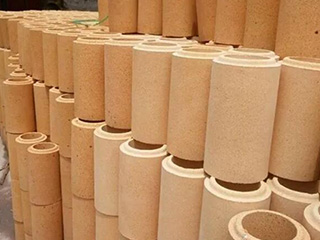Refractory materials are crucial components in industries such as steelmaking, glass manufacturing, and cement production. These materials are designed to withstand high temperatures and harsh environments, protecting the underlying structures and equipment from damage. One of the most widely used refractory materials is brick, which is made from a combination of clay and other minerals.
In recent years, there have been significant innovations in the field of refractory materials, with new materials and manufacturing processes being developed that promise to improve the performance and durability of these materials. One of the most promising areas of research is the development of new types of refractory bricks that are stronger, more heat-resistant, and longer-lasting than traditional clay bricks.
One of the key trends in the development of refractory materials is the use of new materials in the manufacturing process. For example, some researchers are investigating the use of nanomaterials such as graphene and carbon nanotubes, which have unique properties that make them ideal for use in refractory materials. These materials are incredibly strong and have high thermal conductivity, which means they can withstand high temperatures and conduct heat away from the surrounding areas more effectively.

Another trend in the development of refractory materials is the use of additive manufacturing techniques such as 3D printing. This technology allows manufacturers to create complex shapes and structures that were previously impossible to produce using traditional manufacturing methods. For example, 3D printing can be used to create custom-designed refractory bricks that are tailored to the specific needs of a particular industry or application.
One company that is leading the way in the development of 3D printed refractory materials is the German company, Schunk Carbon Technology. The company has developed a process called carbonization, which involves printing a mixture of carbon fibers and binder materials to create a custom-shaped refractory material. This material can withstand temperatures of up to 2000 degrees Celsius and has excellent thermal conductivity, making it ideal for use in high-temperature applications such as steelmaking.
Another innovation in the field of refractory materials is the development of self-healing materials. These materials have the ability to repair themselves when they are damaged, which can significantly extend their lifespan and reduce maintenance costs. One example of a self-healing refractory material is a type of concrete that contains bacteria that can produce calcium carbonate when exposed to air and water. This process helps to fill in any cracks or damage in the material, effectively repairing the material and restoring its strength.
In addition to these innovations in material science, there are also trends in the design and construction of refractory structures. For example, researchers are investigating the use of modular refractory structures, which can be quickly and easily assembled on-site. These structures are made up of pre-fabricated modules that can be easily transported and assembled, reducing the time and cost of construction.
Another trend is the use of monolithic refractory structures, which are made from a single piece of material. These structures are typically used in high-temperature applications where traditional brick structures would not be able to withstand the extreme temperatures. Monolithic structures can be cast on-site, which makes them easy to install and customize to the specific needs of a particular application.
Overall, the future of refractory materials is bright, with significant advances being made in both material science and manufacturing techniques. These innovations promise to improve the performance and durability of refractory materials, making them more effective at protecting industrial equipment and structures from high temperatures and harsh environments. As these materials continue to evolve, it is likely that they will become even more essential to the success of a wide range of industries, from steelmaking to aerospace.
Contact: Mgr. Han
Phone: 0086-13589497465
Email: 1255953279@qq.com
Add: Industrial Area of Lingzi Town,Zichuan District,Zibo City, Shandong,China